

Suunto Blog
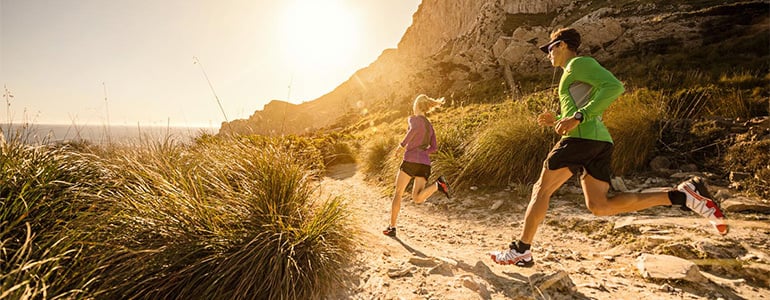
How to plan your training for the year ahead?
When it comes to the art of training endurance athletes, Jason Koop is the man. Koop, as his athletes call him, is Director of Coaching at Carmichael Training Systems and has written a book called Training Essentials for Ultra Running, to be published this coming spring. We caught up with him and got six tips to help you plan your coming training year.
Time travel 12 months ahead
Before sitting down to map out your annual training plan, go for a walk and do this mental exercise: transport yourself forward to December next year and imagine looking back at the preceding 12 months and asking yourself what it is you’d like to see. If you had the best year ever, what would that look like? What adventures or events would make you go, that was awesome! This will help you identify what you’re really passionate about doing, and sometimes it’s not what you think. When you connect with your emotional intelligence, you get much better answers.
Look at the big picture first
It’s not uncommon for people creating an annual training plan to get bogged down in the details. At this time of training cycle, however, you don't need to get down to the nuts and bolts and nitty-gritty just yet. Instead focus on the big picture and worry about the smaller details later. For now, start at race day and work your way back, plotting and planning the major blocks so you stay ahead of the game and avoid having to play catch up. Go from general to specific
Once you've looked at it from a big picture perspective, then you can start to think about moving your training from less to more specific. The longer you are away from the race the less specific and more general your training can be. You can apply this strategy to any kind of endurance race, whether it's a marathon, an ultra marathon or a 20 km trail race. Specificity of training can encompass a lot of different things – the terrain, the intensity of the event, elevation gain. Even the gear that you use – footwear, pack and poles – should become increasingly specific as race day gets closer.
Recruit your support team
Whether it’s your significant other, your family, your running group, or all of the above, getting them invested in the whole process, especially if your goal is really audacious, is crucial. The more people that you have in your corner who understand what you will have to sacrifice and go through, the better for your long-term training process. They can help out with things and offer encouragement. People can't encourage you if they don't know what you're doing.
Proclaim it loudly
If you have something big or crazy planned, stand on a table – or on Facebook – and proclaim it loudly and clearly. You need to do this because it becomes another form of motivation and pressure that will help you achieve your goal.
Track your progress
Tracking your progress with a Suunto watch and sports diaries like Suunto app or Strava will help you compare where you are from one month to the next. Spending some time now working out how your going to track your progress will help in the long run. Ask yourself now what progress indicators are important for you to keep an eye on.
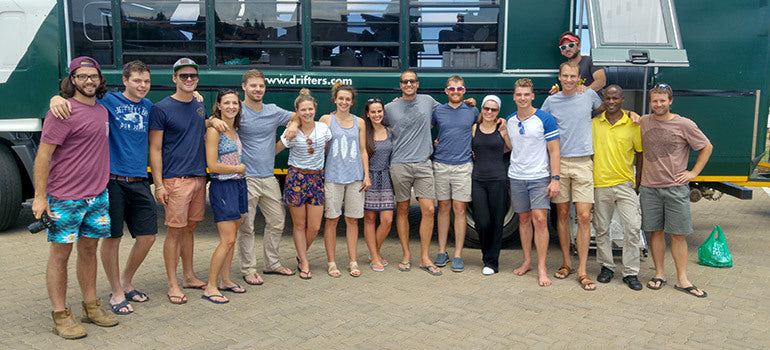
THE TRAVERSE ACROSS A MOUNTAIN KINGDOM HAS STARTED
The winners of our #DreamTraverse Video Contest set of on their week long traverse across Lesotho in Southern Africa today.
Grobler Basson and his friends from Cape Town, South Africa, have had the dream of traversing the central part of the Kingdom of Lesotho already for quite some time. Winning Suunto’s #DreamTraverse Video Contest’s 5.000 euro main prize in November gave their project a boost.
Today the team of 18 people started their traverse at Maliba Lodge, which is located in the northern part of Lesotho. The athletes completing the traverse while trail running, mountain biking, kayaking as well as swimming are Raoul Hamman, Hanmarie Stadler, Gustav Roberts, Charl Swart, Quintin van Heerden, Chris de Bruyn, André Joubert, Grobler Basson, Neelke Stadler and Vian Espost. In the documenting, logistics and support roles are Gideo Basson, Josh Rowe, Attie Stadler, Erika Basson, Karmien Joubert, Janine du Bruyn, Inge Basson and Joshua Oostuizen.
The team’s logistics crew is driving an overland truck that carries people, mountain bikes, kayaks and all the rest of the gear, food and filming equipment.
We talked to Grobler Basson just before the start.
How remote are the mountains of Lesotho?“The term ‘remoteness’ in the Lesotho mountains has a slightly different meaning. Even though we may see some herd boys high up in the mountains communication is desperate at best as my knowledge of the native language Sesotho is scary! As Lesotho is a full on third world country, medical assistance would preferably be sought in South Africa which is a 5 to 7 hour drive by car when picked up on a viable road.“
Are you following an existing route or are you taking your own way across the Mountain Kingdom?“The least amount of known routes possible was our outset from the start. However, during the mountain biking legs there will be some jeep track and even a small stretch of tarmac. The remainder of the route is unknown and new, we will be navigating these stages and following some game trails as well as trails made by the local heard-boys. On the first and last trail running stages we will traverse large ridgelines where no paths exist.
How long is the route?“The route is approximately 210km. According to our route schedule, trail running should make up about 70km, mountain biking 110km, kayaking 28km and a couple of kilometres for swimming. However, as we will be navigating in some unknown territory, these figures are seen as mere guidelines!”
The trail running route on the first day will reach an elevation of 3200 meters.
What are the biggest challenges?“As Lesotho has been experiencing some severe drought, water during the long and remote stages becomes a concern. Navigational errors may see some of the athletes prolong their stages significantly. The weather is also a concern. Even though it is summer time, last month while competing in the Salomon Skyrun about 180km from where we will start, it started snowing. Due to the high mountain climate, to under estimate the weather could pose significant danger.”
What will be the highlights of the traverse?“I think this traverse will be filled with some amazing highlights, but when all is said and done and our bodies start to show the miles, to look back and say I experienced this with my closes friends is priceless. It is something that money can’t buy. We truly believe life is better in a team!”
Follow the Kingdom Traverse project also at kingdomtraverse.co.za
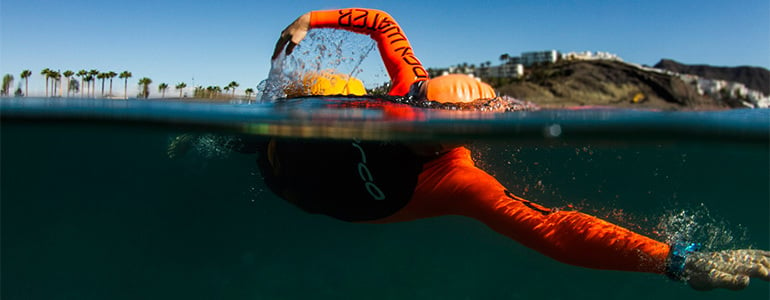
THE ROAD TO KONA IRONMAN: STEP FOUR: RELIVING THE RACE
With heat of the day soaring to 35° C, it was one of the hottest races in the history of the Kona Ironman. Suunto ambassador Åsa Lundström gave it everything she had and improved her placement by six positions from last year. We caught up with her for the final instalment of our four part series about her road to Kona.
© OrcaHer goal was to finish in the top 15, no small feat at the world’s premier Ironman. Placing 11th, Swedish triathlete Åsa Lundström achieved this and says she’s confident she can do even better next year. “After learning several lessons from last year’s race, I had a better strategy for this year’s,” she says. “I know also I still have a lot of unused potential, both in terms of my physical capacity and from a strategic point of view.” To prepare for the Kona Ironman in Hawaii and the race’s humid conditions, she spent the prior three weeks training in the Canary Islands. “I was alone for the first week in Kona, which was pretty good for mental preparation, and a few days before the race my parents came to support me, which was incredibly valuable.”
Click to learn about the Kona Ironman!
© Orca
Mental preparation is an important aspect of her training and focus on race day. Åsa visualizes potential race day scenarios and how she would handle them if they did occur. She has a list of mantras and other mental techniques ready to use when the going gets tough during the race. “I try to focus on my own performance, look back on what I have done in my training and believe I have done enough,” she says. While Åsa didn’t have the perfect race, she’s happy with the improvements she did make. Being more patient, focusing on her performance and not giving much thought to the performance of other athletes were important lessons. “I learnt that cooling myself on the bike and run is on of the biggest factors that affect the outcome of the race,” she says. “Cold water under the helmet, over the body while cycling, ice in the sports bra, cold water sponges over the body and holding ice in the hands while running are useful methods to avoid overheating.”
Click here to read more about Åsa Lundström
© OrcaThe end of the road cycling leg was the most challenging part of Åsa’s race. Pedalling with tired legs into a strong head wind in hot conditions required all the mental toughness she could muster to get through. “There is much more to get out of my potential, and I’m already super psyched to start working to lift my level another couple of inches for next year’s Kona Ironman,” Åsa says. “Before I begin my off-season I will race in the Ironman 70.3 Middle East Championship in Bahrain in early December. “Thanks to all who follow and support my journey! It means more to me than you might think.”
Here are links to part one, part two and part three of our four part series on Åsa's road to Kona Ironman. Lead image: © Orca/Gines Diaz
Dream Traverse Video Contest Finalists: Kingdom Traverse and Patagonia Dreaming
Get to know the first two Dream Traverse Video Contest finalists and vote for your favorite to make its creator's dream come true! View all six videos and choose your winner at traversecollection
Three Suunto Traverse outdoor watches will be raffled among all voters.
KINGDOM TRAVERSE
The first candidate, Grobler Basson, comes from Cape Town, South Africa. Grobler and some of his friends actually had their adventure dream long before the contest.
“We have been planning our adventure for the better part of this year, we even called it the Kingdom Traverse long before we knew of Suunto's plans and the launch of your new Traverse watch,” Grobler says.
“We will traverse Lesotho from one side to the other. We will do this the only way we know possible – high altitude trail running, some off-the-grid mountain biking, cold water swimming and breath-taking kayaking coupled with some off-the-chart camping spots and difficult navigation!”
The Kingdom of Lesotho is a land locked mountain kingdom located inside South Africa. It is the country with the highest lowest point on Earth of 1400 m (4600 ft).
“The Kingdom Traverse would serve two goals; firstly to stimulate and temporarily satisfy our need for adventure and exploration, secondly, we see Lesotho as an amazing jewel yet to be discovered by international adventure tourism. We believe that the Kingdom Traverse would bring some amazing exposure to what Lesotho has to offer, and possible boost their tourism!”
PATAGONIA DREAMING
Candidate number two is Kellen Witschen from northern Minnesota in the United States.
“The outdoors is a place I can go to and feel free from a schedule and from responsibilities, even if it’s only a quick bike ride at the end of the day. It is a place to test your knowledge and skills, where the consequence of failure is very real and very apparent,” Kellen says.
Kellen’s Dream Traverse is far from an evening ride: he wants to ride the Carretera Austral, a 770 mile dirt road that runs from Puerto Montt to the start of the Patagonian ice cap.
“Ever since visiting Patagonia in 2012, I have dreamed about going back. While doing research there, I only got to see a small section of the area and the group traveled exclusively by motor vehicle. I want to go back and bike the entire 770 miles of the Carretera Austral.”
“The road travels through many different types of landscape and vegetation, ranging from closely woven coastal canals and Patagonian Steppe to high mountain peaks.”
Go to traversecollection, watch the six videos and vote for your favorite. Three Suunto Traverse outdoor watches will be raffled among all voters.
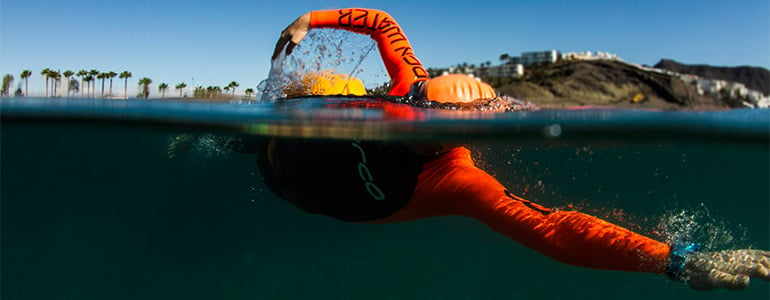
The road to Kona Ironman: Step three: Recovering for race day
The legendary Kona Ironman is just around the corner and Suunto triathlete Åsa Lundström is getting excited. We continue following her steps towards race day in our four part series. Step one was planning, step two was progress and, in this instalment, we look at her recovery or tapering time before the big day. The Kona Ironman is unforgiving. If a competitor gets to the start line not 100 per cent, the 226.27 km course can exact a heavy toll. Champion Swedish triathlete Åsa Lundström has been living in the Canary Islands for over a month, preparing for the race which will be the greatest test of her mind, body and spirit. The heat, humidity and volcanic terrain are similar to the conditions in Kona, Hawaii, making the island a better training place than her home in Scandinavia.
Click here to read about how Åsa became an elite triathlete
After an intense training cycle over the last months, for the last two of weeks Åsa has been fine-tuning her body and mind for the race. During the first week of her two week tapering period, she reduced her training volume from 35 to 20 hours. In the week immediately before the race, she cuts it from 20 to between eight and 10 hours. “This stage involves easing off the volume of training and sleeping and eating properly, and making sure to rest between the sessions to ensure quality training that feels really good,” Åsa says. “This is usually the first time when I can start sensing whether I am in good shape.” The big danger is getting to the start line over-trained. Avoiding this is crucial.
Click here to read about how to use your Ambit3's recovery features
“It’s important to pay close attention to the body’s signals,” Åsa says. “It comes down to having the experience of knowing the different signs of fatigue from hard training, and accumulated fatigue leading to overtraining. “Sleeping enough, eating enough – and frequently enough – are important for recovery.”
Åsa also writes a detailed training diary for her coach Cliff English to read for an objective perspective. Cliff looks out for negative signs and patterns that can sometimes be difficult for her to see herself. “Three weeks of hard work, good fun and nice company in this lovely place has come to an end,” Åsa says. “The journey continues and the countdown has begun! Bring it!”
Tune in next week for the final instalment of four part series about Åsa – her ideal race day in the Ironman World Championship in Kona.
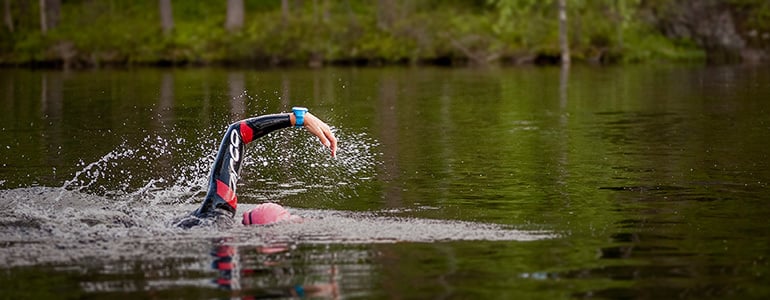
The road to Kona Ironman, Step two: rapid progress
Last week we kicked off the first instalment of our four-part series following Suunto athlete Åsa Lundström as she prepares for the coming Ironman World Championship in Kona, Hawaii. After looking at step one last week, planning, this week Åsa tells us what progress, step two, looks like as her training intensifies.
There’s one crucial sign Åsa looks for to know she’s making progress in her training for the Kona Ironman: feeling unbeatable.“They don’t come very often, but every now and then, you should get that moment, if only for a moment, that you are unbeatable,” she says. “If I don’t ever get those ‘I’m on fire today!’ moments in my training periods, then something needs changing.“I don’t do tests or anything like that to check I’m in good shape, I just look for signs, a feeling, during the quality sessions I do – it’s the feeling of being immortal, unbeatable, strong.”
Click here to read more about Åsa Lundström, the unlikely Swedish triathlete
© Orca/Gines Diaz
Having planned her training with her coach Cliff English, it’s then time to make rapid progress, to push herself towards her personal best while also ensuring she has enough recovery time.Åsa’s training progresses through three stages: the first is getting into the rhythm of hard training; the second stage involves blocks of quality and quantity sessions; and the last is a tapering period of two weeks before race day. As Åsa moves through the three stages, her coach Cliff English tracks her performance and makes adjustments to her training as required. Understanding and trust between athlete and coach is essential here.
The longer Cliff works with an athlete, the more data he accumulates, which better helps him track the athlete’s performance and recognize when changes must be made. This means both he and Åsa must be sensitive to signs they’re pushing too hard or not hard enough.
Click here to read Åsa’s 8 open water swimming tips!
“If I start having trouble sleeping, or lose my appetite that could be a sign to back off a bit,” Åsa says. “On the other hand, if I never feel exhausted after a quality session, but have an unsatisfying feeling, that could be a sign of not pushing hard enough. “I am supposed to feel tired between the sessions more or less all the time.”As her training intensifies, Åsa also works on the mental side of her training by spending time visualizing the race, the potential scenarios that could happen and how she would respond to them. “As race day gets closer, I also stop meeting people who might be sick, or even just have a minor cold,” she says. “I skip junk food and unnecessary treats and I make sure I get enough sleep every night.”
Stay tuned for third installment of our four part series about Åsa as she makes progress on the road to the Ironman World Championship in Kona.














































































